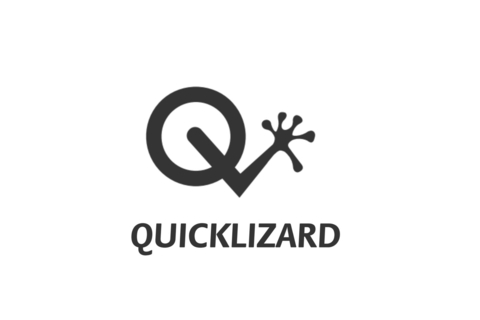
Quicklizard: Complete Buyer's Guide
AI-driven dynamic pricing optimization
Quicklizard delivers AI-driven dynamic pricing optimization that combines machine learning algorithms with rule-based constraints to help ecommerce retailers maximize revenue through intelligent price adjustments[38][40].
Market Position & Maturity
Market Standing
Quicklizard occupies the mid-to-upper market segment within the AI pricing optimization landscape, positioned alongside vendors like Omnia, below enterprise leaders like Competera and PROS but above basic repricing tools[19].
Company Maturity
Company maturity indicators suggest established operations with enterprise-grade capabilities, evidenced by the platform's ability to handle complex omnichannel requirements and sophisticated integration demands[38][40].
Longevity Assessment
Long-term viability appears supported by enterprise customer relationships and sophisticated technical capabilities, though the platform's success depends heavily on continued investment in technical innovation and customer support infrastructure to maintain competitive positioning[44][46].
Proof of Capabilities
Customer Evidence
Quicklizard's claimed client base includes John Lewis, Samsung, and Whirlpool, demonstrating capability to serve large-scale retail operations, though current customer relationships require verification[44].
Quantified Outcomes
A European home goods retailer achieved 9% average order value increase through custom pricing logic implementation[49]. A mid-market fashion brand realized 70% reduction in repricing workload, though requiring three months to master the strategy builder interface[46].
Market Validation
Market validation comes through documented customer implementations across multiple industries, including European retailers successfully expanding into new markets with channel-specific pricing strategies[49].
Reference Customers
Enterprise client portfolio including claimed relationships with John Lewis, Samsung, and Whirlpool[44].
AI Technology
Quicklizard's AI-powered pricing engine combines machine learning algorithms with rule-based constraints in a hybrid 80/20 approach - 80% AI-driven recommendations balanced with 20% rule-based guardrails[39][55].
Architecture
The platform's open Python-based architecture represents a significant technical differentiator, enabling custom pricing strategy development that extends beyond standard dynamic pricing rules[38].
Primary Competitors
Quicklizard competes in the mid-to-upper market segment alongside Omnia, positioned below enterprise leaders like Competera and PROS but above basic repricing tools[19].
Competitive Advantages
Open Python-based architecture enables custom pricing strategy development beyond standard dynamic pricing rules[38]. Sub-1-minute price updates across online and offline channels provide speed advantages[40][53]. Omnichannel synchronization capabilities coordinate pricing across multiple sales channels in real-time[40][53]. Ecommerce-specific features including flash sale support and cart abandonment triggers[40][53].
Market Positioning
The technical customization capabilities that distinguish Quicklizard also create complexity barriers for organizations lacking development resources[38][46]. This positioning serves sophisticated users while limiting appeal for organizations seeking standardized solutions.
Win/Loss Scenarios
Quicklizard wins against competitors when organizations require sophisticated customization capabilities, omnichannel price synchronization, and have dedicated technical resources for implementation and maintenance[38][40][46]. The platform loses to competitors when organizations prioritize simple deployment over customization flexibility, require extensive cross-border tax automation, or need comprehensive reporting and analytics capabilities[46][53].
Key Features
Pros & Cons
Use Cases
Integrations
Pricing
Featured In Articles
Comprehensive analysis of Price Testing for Ecommerce for Ecommerce businesses and online retailers. Expert evaluation of features, pricing, and implementation.
How We Researched This Guide
About This Guide: This comprehensive analysis is based on extensive competitive intelligence and real-world implementation data from leading AI vendors. StayModern updates this guide quarterly to reflect market developments and vendor performance changes.
57+ verified sources per analysis including official documentation, customer reviews, analyst reports, and industry publications.
- • Vendor documentation & whitepapers
- • Customer testimonials & case studies
- • Third-party analyst assessments
- • Industry benchmarking reports
Standardized assessment framework across 8 key dimensions for objective comparison.
- • Technology capabilities & architecture
- • Market position & customer evidence
- • Implementation experience & support
- • Pricing value & competitive position
Research is refreshed every 90 days to capture market changes and new vendor capabilities.
- • New product releases & features
- • Market positioning changes
- • Customer feedback integration
- • Competitive landscape shifts
Every claim is source-linked with direct citations to original materials for verification.
- • Clickable citation links
- • Original source attribution
- • Date stamps for currency
- • Quality score validation
Analysis follows systematic research protocols with consistent evaluation frameworks.
- • Standardized assessment criteria
- • Multi-source verification process
- • Consistent evaluation methodology
- • Quality assurance protocols
Buyer-focused analysis with transparent methodology and factual accuracy commitment.
- • Objective comparative analysis
- • Transparent research methodology
- • Factual accuracy commitment
- • Continuous quality improvement
Quality Commitment: If you find any inaccuracies in our analysis on this page, please contact us at research@staymodern.ai. We're committed to maintaining the highest standards of research integrity and will investigate and correct any issues promptly.